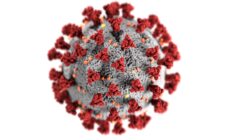Measles is an extremely infectious disease caused by a virus. One of the leading causes for death among children in the world.
Scientific name – RUBEOLA
What causes measles?
Measles are caused by the paramyxovirus (measles virus) of species called morbillivirus (single stranded RNA virus). Symptoms are not seen immediately after the invasion of the virus. It takes about 8-12 days to show symptoms. It multiplies in the back of the throat and lungs then spread slowly to other areas.
Measles are transmitted easily through sneezing and coughing droplets of the infected person, because the measles virus resides mainly in the mucus and throat regions of infected person.
People under risk of measles are:
- Close contact with the infected person.
- Using or sharing materials with infected person.
- No proper vaccination against measles virus.
- Children`s below one year of age.
- Unsafe travel to highly infectious regions
- No proper nutritious food, especially of vitamin A.
Signs and symptoms seen in measles:
- Fever – this is the first reaction of the body`s defense mechanism for the invasion of any infection. The temperature of the body is considerably increased.
- Cough – this is another sign of infection. Protective reflex action to clear the throat and airways
- Redness and irritation of eyes in few cases
- Increased sensitivity to the light
- Rashes – these are seen visibly after above symptoms. Rashes starts from head and slowly progress to the whole body.
- Sore throat
- Running nose
- Koplik spot – tiny white colored spot seen inside the mouth especially the cheek regions.
- Muscle pain.
Complications of measles:
Measles are one of the deadly diseases in the world. They can lead to following complication like
- Infection of ear – mainly bacterial infections
- Pneumonia – lung infection, mostly proved to be deadly in children’s
- Blindness – mainly night blindness due to deficiency of vitamin A
- Encephalitis – inflammation of the brain cells
- Thrombocytopenia – decreased levels of platelet counts
- Bronchitis – inflammation of the bronchial tubes
- Laryngitis – inflammation of the larynx
- Subacute sclerosing panencephalitis – seen in some rare cases
Diagnosis of measles:
Mainly the diagnosis is made by the patient’s appearance and history. Rashes and tiny spot appearance shows the presence of measles or other disease.
Blood test – done to check for the presence of antibodies against the measles virus
Treatment of measles:
Usually there is no proper treatment protocol for measles. The body cures itself within 1 -2 weeks if there are no complications seen.
If there is any complication seen medications are used, especially to reduce fever and cough.
Proper intake of nutritious foods to balance the vitamin A deficiency
Antibiotic administration against other infections
Proper hydration of the patients
Proper care to subside the symptoms quickly
Take adequate rest as advised by doctors
Prevention of measles:
- Vaccination is the best method for everyone to prevent measles.
- Children’s should be properly vaccinated routinely.
- Proper intake of nutritious vitamin A rich foods
- Keep away from the infected persons
- Avoid travelling to the measles prevailing areas
- Best to keep infected person isolated from others in family till it subsides
Conclusion:
As we see measles is the deadliest disease in the world. Prevention is must to keep ourselves on safer side. Our body has capabilities to fight against measles and recover. We just need to control our symptoms.
Avoid measles occurrence in childhood by proper care of mother and by proper vaccination of child.
Today the measles eradication process is going in full swing in all countries and some have eradicated it.
Awareness should be created on measles and vaccination available for it.





